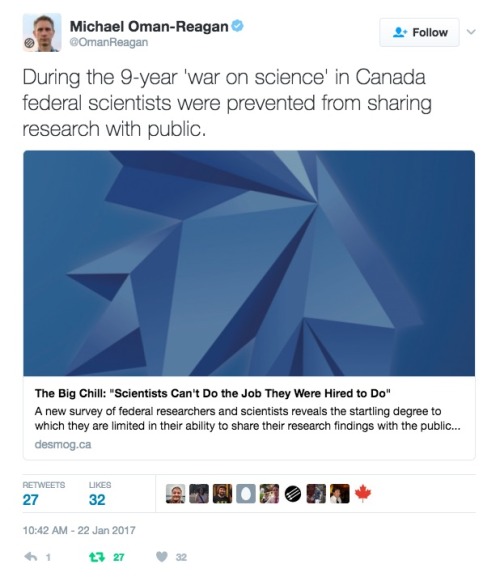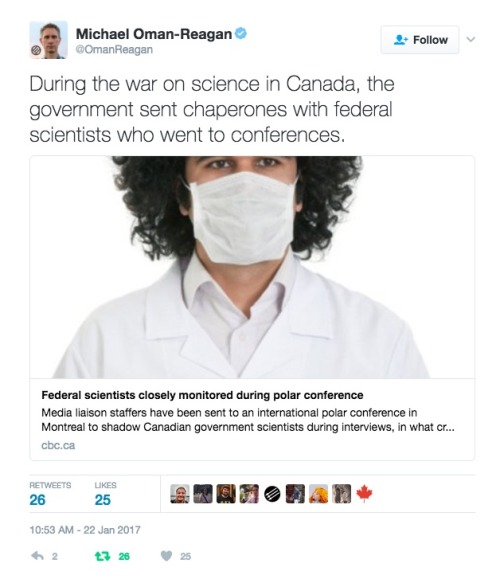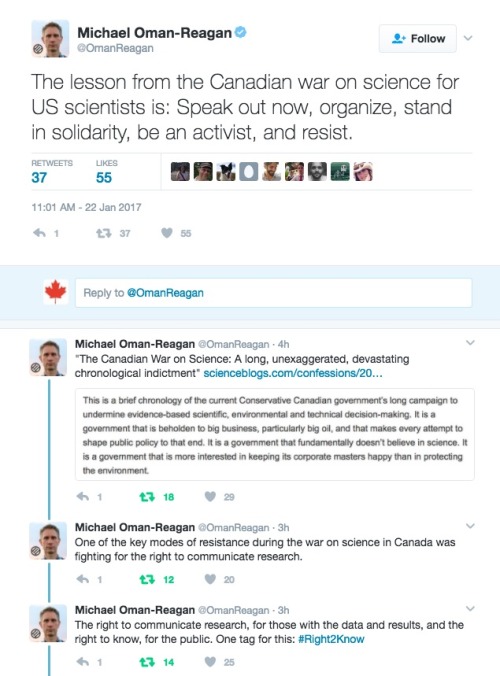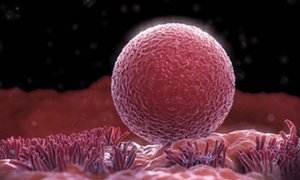Estrogen Alters Memory Circuit Function In Women With Gene Variant
Estrogen Alters Memory Circuit Function in Women with Gene Variant
Fluctuations in estrogen can trigger atypical functioning in a key brain memory circuit in women with a common version of a gene, NIMH scientists have discovered. Brain scans revealed altered circuit activity linked to changes in the sex hormone in women with the gene variant while they performed a working memory task.

(Image caption: Both PET scans (left) and fMRI scans (right) showed the same atypical activation (yellow) in the brain’s memory hub, or hippocampus, in response to estrogen in women performing a working memory task – if they carried a uniquely human version of the BDNF gene. Activity in this area is typically suppressed during working memory. Picture shows PET and fMRI data superimposed over anatomical MRI image)
The findings may help to explain individual differences in menstrual cycle and reproductive-related mental disorders linked to fluctuations in the hormone. They may also shed light on mechanisms underlying sex-related differences in onset, severity, and course of mood and anxiety disorders and schizophrenia. The gene-by-hormone interaction’s effect on circuit function was found only with one of two versions of the gene that occurs in about a fourth of white women.
Drs. Karen Berman, Peter Schmidt, Shau-Ming Wei, and colleagues, of the NIMH Intramural Research Program, report on this first such demonstration in women April 18, 2017 in the journal Molecular Psychiatry.
Prior to the study, there was little evidence from research on the human brain that might account for individual differences in cognitive and behavioral effects of sex hormones. For example, why do some women develop postpartum depression and others do not – in response to the same hormone changes? Why do some women report that estrogen replacement improved their memory, whereas large studies of postmenopausal estrogen therapy show no overall improvement in memory performance?
Evidence from humans has also been lacking for the neural basis of stark sex differences in prevalence and course of mental disorders that are likely related to sex hormones. For example, why are there higher rates of mood disorders in females and higher rates of ADHD in males – or later onset of schizophrenia in females?
In seeking answers to these questions, the researchers focused on working memory, a well-researched brain function often disturbed in many of these disorders. It was known that working memory is mediated by a circuit from the brain’s executive hub, the prefrontal cortex, to its memory hub, the hippocampus. Notably, hippocampus activity is typically suppressed during working memory processing.
Following-up on a clue from experiments in mice, the NIMH team hypothesized that estrogen tweaks circuit function by interacting with a uniquely human version of the gene that codes for brain derived neurotrophic factor (BDNF), a pivotal chemical messenger operating in this circuit. To find out, the researchers experimentally manipulated estrogen levels in healthy women with one or the other version of the BDNF gene over a period of months. Researchers periodically scanned the women’s brain activity while they performed a working memory task to see any effects of the gene-hormone interaction on circuit function.
The researchers first scanned 39 women using PET (positron emission tomography) and later confirmed the results in 27 women using fMRI (functional magnetic resonance imaging). Both pegged atypical activity in the hippocampus to the interaction. Turning up the same findings using two types of neuroimaging strengthens the case for the accuracy of their observations, say the researchers. Such gene-hormone interactions affecting thinking and behavior are consistent with findings from animal studies and are suspect mechanisms conferring risk for mental illness, they add.
More Posts from Contradictiontonature and Others
Liver Circulation - Flashcard

The liver is supplied with blood by the hepatic artery and the hepatic portal vein
branches of the hepatic artery and the hepatic portal vein distribute blood to the periphery of the liver lobules.
Blood passes along sinusoids, which are lined by hepatocytes, which perform numerous metabolic and synthetic functions.
The processed blood passes into branches of the hepatic vein in the centre of each lobule, and eventually drains into the hepatic vein.
The biliary system is independent of the vascular system and bile moves in the opposite direction to the blood.
Initially it is collected in bile ductules which are surrounded by collagenous tissue, which forms part of the collagenous trabecular septum.
The bile is collected by increasingly large trabecular ducts, which fuse to form intrahepatic ducts which finally drain into the main hepatic ducts.


The 2016 Nobel Prize in Chemistry is awarded to Jean-Pierre Sauvage, Sir Fraser Stoddart, and Bernard Feringa for the design and production of molecular machines with controllable movements: bit.ly/NobelSci2016
Here’s something cool to do with your leftover candy corn – all you have to do is head to space.
Astronauts are allowed to bring special “crew preference” items when they go up in space. NASA astronaut Don Pettit chose candy corn for his five and a half month stint aboard the International Space Station. But these candy corn were more than a snack, Pettit used them for experimentation.
See how he did it:
Antibiotic Resistance Will Soon Hit the Tipping Point, Unless We Act
Antibiotic Resistance Will Soon Hit the Tipping Point, Unless We Act
Antibiotic-resistant superbugs are enough of a severe, genuine threat to global populations that the UN has placed the issue on par with the spread of Ebola and HIV. The livestock industry is a major factor contributing to the rapid proliferation of these superbugs, swift action is required.









A required read from Michael Oman-Reagan.
This is all true. This all happened in Canada, and its very likely it will happen in the USA under Trump and be worse than Harper’s crackdown on Science ever was.
Links cited in this twitter essay:
The Big Chill: “Scientists Can’t Do the Job They Were Hired to Do”
More than 1000 Jobs Lost, Climate Program Hit Hard in Coming Environment Canada Cuts
Harper Government Trashes Another Federal Science Library
Federal scientists closely monitored during polar conference
Science Silenced: US Scientist Caught in Canadian Muzzle Climate-change scientists feel ‘muzzled’ by Ottawa: Documents
The Canadian War on Science: A long, unexaggerated, devastating chronological indictment
http://ourrighttoknow.ca/
http://write2know.ca/
https://evidencefordemocracy.ca

Swarms of magnetic bacteria could be used to deliver drugs to tumors
Researchers funded in part by the National Institute of Biomedical Imaging and Bioengineering (NIBIB) have recently shown that magnetic bacteria are a promising vehicle for more efficiently delivering tumor-fighting drugs. They reported their results in the August 2016 issue of Nature Nanotechnology.
Ouajdi Felfoul, Mahmood Mohammadi, Samira Taherkhani, Dominic de Lanauze, Yong Zhong Xu, Dumitru Loghin, Sherief Essa, Sylwia Jancik, Daniel Houle, Michel Lafleur, Louis Gaboury, Maryam Tabrizian, Neila Kaou, Michael Atkin, Té Vuong, Gerald Batist, Nicole Beauchemin, Danuta Radzioch, Sylvain Martel. Magneto-aerotactic bacteria deliver drug-containing nanoliposomes to tumour hypoxic regions. Nature Nanotechnology, 2016; DOI: 10.1038/nnano.2016.137
Illustration showing magnetic bacteria delivering drugs to a tumor. Credit: NanoRobotics Laboratory, Polytechnique Montreal

Evidence suggests women’s ovaries can grow new eggs
Scientists have uncovered the first evidence that the human ovary may be able to grow new eggs in adulthood.
If confirmed, the discovery would overturn the accepted view that women are born with a fixed number of eggs and that the body has no capacity to increase this supply. Until now this has been the main constraint on the female reproductive lifespan. The findings, if replicated, would raise the prospect of new treatments to allow older women to conceive and for infertility problems in younger women.
The small study, involving cancer patients, showed that ovarian biopsies taken from young women who had been given a chemotherapy drug had a far higher density of eggs than healthy women of the same age.
Prof Evelyn Telfer, who led the work at the University of Edinburgh, said: “This was something remarkable and completely unexpected for us. The tissue appeared to have formed new eggs. The dogma is that the human ovary has a fixed population of eggs and that no new eggs form throughout life.”
Ovarian biopsies taken from young women who had been given a particular chemotherapy drug showed that the tissue appeared to have formed new eggs. Photograph: Science Picture Co/Getty Images/Science Faction

If you dropped a water balloon on a bed of nails, you’d expect it to burst spectacularly. And you’d be right – some of the time. Under the right conditions, though, you’d see what a high-speed camera caught in the animation above: a pancake-shaped bounce with nary a leak. Physically, this is a scaled-up version of what happens to a water droplet when it hits a superhydrophobic surface.
Water repellent superhydrophobic surfaces are covered in microscale roughness, much like a bed of tiny nails. When the balloon (or droplet) hits, it deforms into the gaps between posts. In the case of the water balloon, its rubbery exterior pulls back against that deformation. (For the droplet, the same effect is provided by surface tension.) That tension pulls the deformed parts of the balloon back up, causing the whole balloon to rebound off the nails in a pancake-like shape. For more, check out this video on the student balloon project or the original water droplet research. (Image credits: T. Hecksher et al., Y. Liu et al.; via The New York Times; submitted by Justin B.)


Social Stress Leads To Changes In Gut Bacteria
Exposure to psychological stress in the form of social conflict alters gut bacteria in Syrian hamsters, according to a new study by Georgia State University.
It has long been said that humans have “gut feelings” about things, but how the gut might communicate those “feelings” to the brain was not known. It has been shown that gut microbiota, the complex community of microorganisms that live in the digestive tracts of humans and other animals, can send signals to the brain and vice versa.
In addition, recent data have indicated that stress can alter the gut microbiota. The most common stress experienced by humans and other animals is social stress, and this stress can trigger or worsen mental illness in humans. Researchers at Georgia State have examined whether mild social stress alters the gut microbiota in Syrian hamsters, and if so, whether this response is different in animals that “win” compared to those that “lose” in conflict situations.
Hamsters are ideal to study social stress because they rapidly form dominance hierarchies when paired with other animals. In this study, pairs of adult males were placed together and they quickly began to compete, resulting in dominant (winner) and subordinate (loser) animals that maintained this status throughout the experiment. Their gut microbes were sampled before and after the first encounter as well as after nine interactions. Sampling was also done in a control group of hamsters that were never paired and thus had no social stress. The researchers’ findings are published in the journal Behavioural Brain Research.
“We found that even a single exposure to social stress causes a change in the gut microbiota, similar to what is seen following other, much more severe physical stressors, and this change gets bigger following repeated exposures,” said Dr. Kim Huhman, Distinguished University Professor of Neuroscience at Georgia State. “Because ‘losers’ show much more stress hormone release than do ‘winners,’ we initially hypothesized that the microbial changes would be more pronounced in animals that lost than in animals that won.”
“Interestingly, we found that social stress, regardless of who won, led to similar overall changes in the microbiota, although the particular bacteria that were impacted were somewhat different in winners and losers. It might be that the impact of social stress was somewhat greater for the subordinate animals, but we can’t say that strongly.”
Another unique finding came from samples that were taken before the animals were ever paired, which were used to determine if any of the preexisting bacteria seemed to correlate with whether an animal turned out to be the winner or loser.
“It’s an intriguing finding that there were some bacteria that seemed to predict whether an animal would become a winner or a loser,” Huhman said.
“These findings suggest that bi-directional communication is occurring, with stress impacting the microbiota, and on the other hand, with some specific bacteria in turn impacting the response to stress,” said Dr. Benoit Chassaing, assistant professor in the Neuroscience Institute at Georgia State.
This is an exciting possibility that builds on evidence that gut microbiota can regulate social behavior and is being investigated by Huhman and Chassaing.
-
 abominable-instinct liked this · 4 years ago
abominable-instinct liked this · 4 years ago -
 maryan028 liked this · 5 years ago
maryan028 liked this · 5 years ago -
 albertowightz liked this · 6 years ago
albertowightz liked this · 6 years ago -
 samsillysketch liked this · 6 years ago
samsillysketch liked this · 6 years ago -
 generalblazeavenue liked this · 6 years ago
generalblazeavenue liked this · 6 years ago -
 bihexual-wizard liked this · 6 years ago
bihexual-wizard liked this · 6 years ago -
 mgceyes liked this · 6 years ago
mgceyes liked this · 6 years ago -
 mgceyes reblogged this · 6 years ago
mgceyes reblogged this · 6 years ago -
 ghouls-ghouls-boos liked this · 6 years ago
ghouls-ghouls-boos liked this · 6 years ago -
 bloodyaliens liked this · 6 years ago
bloodyaliens liked this · 6 years ago -
 mourza liked this · 6 years ago
mourza liked this · 6 years ago -
 dipandoracat liked this · 7 years ago
dipandoracat liked this · 7 years ago -
 daisukoth liked this · 7 years ago
daisukoth liked this · 7 years ago -
 mellowhub liked this · 7 years ago
mellowhub liked this · 7 years ago -
 lovemymoemia reblogged this · 7 years ago
lovemymoemia reblogged this · 7 years ago -
 lovemymoemia liked this · 7 years ago
lovemymoemia liked this · 7 years ago -
 ipadt liked this · 7 years ago
ipadt liked this · 7 years ago -
 rederis liked this · 7 years ago
rederis liked this · 7 years ago -
 ondinefinn reblogged this · 7 years ago
ondinefinn reblogged this · 7 years ago -
 5hfeels liked this · 7 years ago
5hfeels liked this · 7 years ago -
 mysterysciencegirlfriend3000 reblogged this · 7 years ago
mysterysciencegirlfriend3000 reblogged this · 7 years ago -
 neuroscience-nerd liked this · 7 years ago
neuroscience-nerd liked this · 7 years ago -
 justmetoo2-blog liked this · 7 years ago
justmetoo2-blog liked this · 7 years ago -
 abgza liked this · 7 years ago
abgza liked this · 7 years ago -
 egpunk liked this · 7 years ago
egpunk liked this · 7 years ago -
 tardigrado213 liked this · 7 years ago
tardigrado213 liked this · 7 years ago -
 fabo9 liked this · 7 years ago
fabo9 liked this · 7 years ago -
 lunardusters-blog liked this · 7 years ago
lunardusters-blog liked this · 7 years ago -
 feel-at-pizza-blog liked this · 7 years ago
feel-at-pizza-blog liked this · 7 years ago -
 annagurova-pazyuk-blog liked this · 7 years ago
annagurova-pazyuk-blog liked this · 7 years ago -
 fannyning-blog1 liked this · 7 years ago
fannyning-blog1 liked this · 7 years ago -
 foolish-arachni-blog liked this · 7 years ago
foolish-arachni-blog liked this · 7 years ago -
 fabulousdinosaurrawr-blog liked this · 7 years ago
fabulousdinosaurrawr-blog liked this · 7 years ago -
 motleyjack-blog1 liked this · 7 years ago
motleyjack-blog1 liked this · 7 years ago -
 emotionalvoid7-blog liked this · 7 years ago
emotionalvoid7-blog liked this · 7 years ago -
 moon-princess-gabi-blog liked this · 7 years ago
moon-princess-gabi-blog liked this · 7 years ago -
 deactivated7e8937846298649-blog liked this · 7 years ago
deactivated7e8937846298649-blog liked this · 7 years ago -
 xyzblog-blog1 liked this · 7 years ago
xyzblog-blog1 liked this · 7 years ago -
 amateur-ambassador liked this · 7 years ago
amateur-ambassador liked this · 7 years ago -
 dnvri liked this · 7 years ago
dnvri liked this · 7 years ago -
 magnastrum liked this · 7 years ago
magnastrum liked this · 7 years ago -
 erosandpsiche liked this · 7 years ago
erosandpsiche liked this · 7 years ago -
 humblenomore reblogged this · 7 years ago
humblenomore reblogged this · 7 years ago -
 drcarinbondar-blog reblogged this · 7 years ago
drcarinbondar-blog reblogged this · 7 years ago
A pharmacist and a little science sideblog. "Knowledge belongs to humanity, and is the torch which illuminates the world." - Louis Pasteur
215 posts

